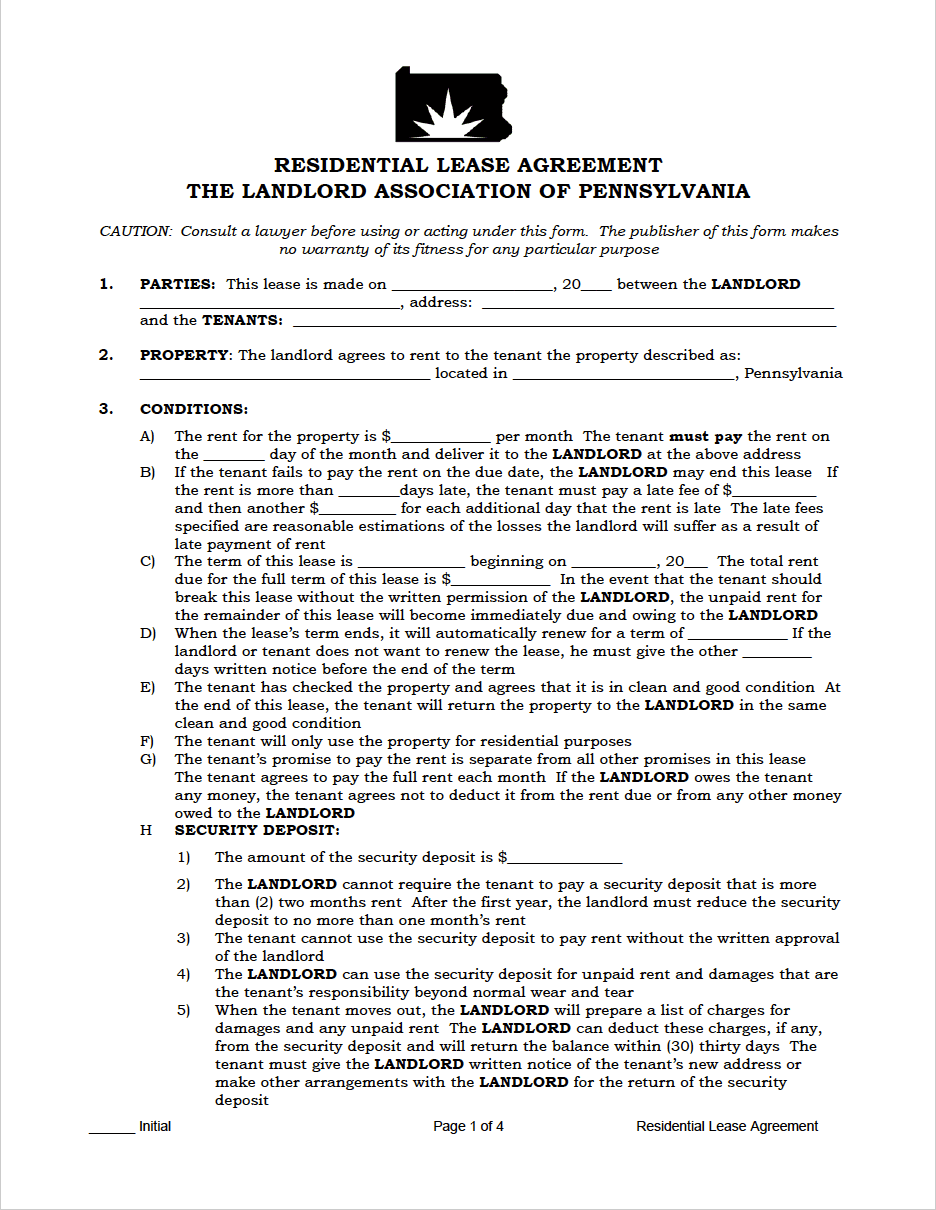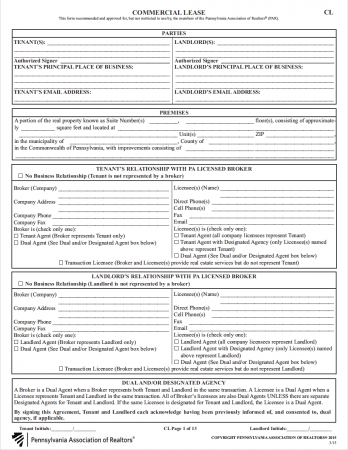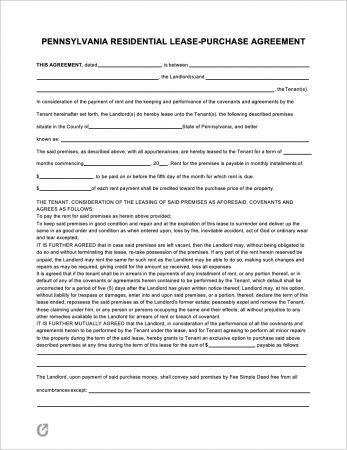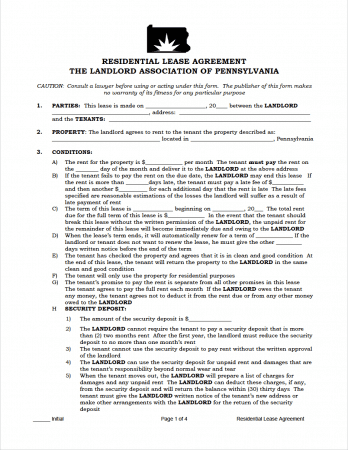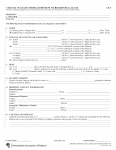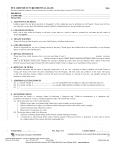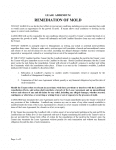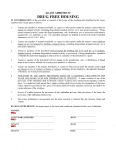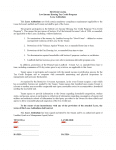Pennsylvania Rental Lease Agreement Templates
A Pennsylvania rental lease agreement is a binding form used for permitting a person (or persons) with the right to occupy a space in exchange for fixed payments to the landlord. In order for the lease to go into effect, the tenant(s) must agree to all conditions included in the lease, which covers subjects relating to payments, deposits, pets, guests, parking, default, lease term, notices, and more. Pennsylvania landlords are bound by the state’s landlord-tenant act of 1951, which contains the obligations of landlords and tenants, among other requirements.
Types (6)
| Commercial | Lease-Purchase| Monthly | Roommate | Standard | Sublease |
Addendums (6)
Download: PDF
Download: PDF
Download: PDF
Download: PDF
Download: PDF
Download: PDF
What is a Pennsylvania Lease Agreement?
A Pennsylvania Lease Agreement is a binding form that lays out the responsibilities and rights of the two (2) parties that the agreement is formed by—the landlord and tenant(s). The responsibilities and rights of both parties last for the duration of the contract, which is commonly one (1) year. Prior to beginning a lease with a tenant, it is highly recommended the landlord screens them via a Federal Fair Housing Act-approved rental application.
State Laws & Guides
Laws: Landlord and Tenant Act of 1951 (§§ 250.101 to 250.602)
Landlord-Tenant Guides / Handbooks
When is Rent Due?
Pennsylvania state law is silent on when rent should be paid by tenants. Because of this, the rental contract should it clear when and where rent should be paid. State law is also silent on matters regarding rent grace periods.
Landlord’s Access
Emergency: No statute. As a general rule, Federal law protects landlord’s right to enter a rental unit/building in the event of an emergency.
Non-Emergency: No statute. The conditions of entry in non-emergency situations should be stated in the lease. Landlords are recommended to provide tenants with at least twenty-four (24) hours notice prior to making entry.
Required Disclosures
 Lead Paint Disclosure: Landlords should have tenants sign this form at the start of the lease. In addition to the form, they should be given the EPA-created brochure on the topic.
Lead Paint Disclosure: Landlords should have tenants sign this form at the start of the lease. In addition to the form, they should be given the EPA-created brochure on the topic.
Download: PDF
Security Deposits
Maximum (§ 250.511a): The maximum amount a landlord can charge a tenant for a security deposit is dependent on the term of the lease. During the first (1st) year of the lease, the maximum security deposit a landlord may demand is two (2) months’ rent. During the second (2nd) and any later years of the lease, or during any renewal of the original lease, the security deposit cannot exceed one (1) months’ rent.
Returning to Tenant (§ 250.512): A landlord must return a security deposit to a tenant within thirty (30) days of termination of a lease or upon surrender and acceptance of the leasehold premises, whichever first occurs.
Should the landlord plan to retain any portion of the deposit as compensation for damages caused by the tenant, they must provide the tenant with a written list of such damages. The delivery of the list must be accompanied by “payment of the difference between any sum deposited in escrow, including any unpaid interest thereon, for the payment of damages to the leasehold premises and the actual amount of damages to the leasehold premises caused by the tenant.”
Deposit Interest (§ 250.511b): Tenants are entitled to receiving interest from their deposit on the anniversary of the signed lease. For administrative expenses, landlords can collect one percent (1%) per year.
